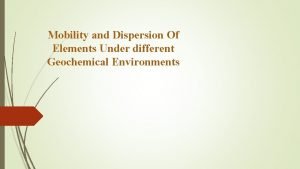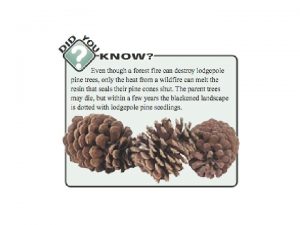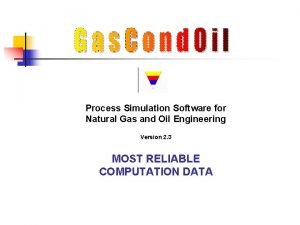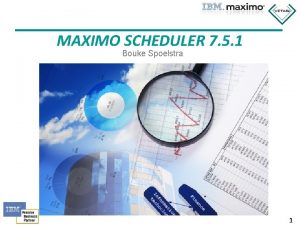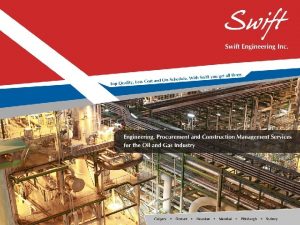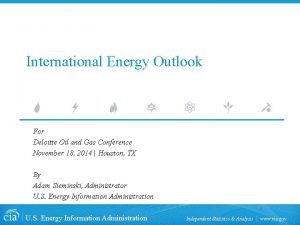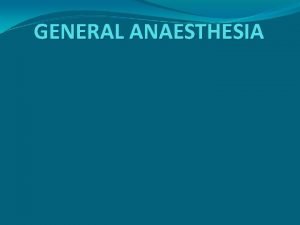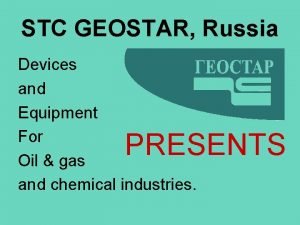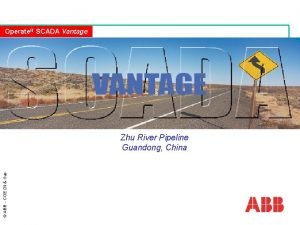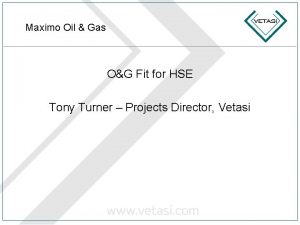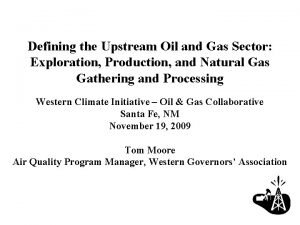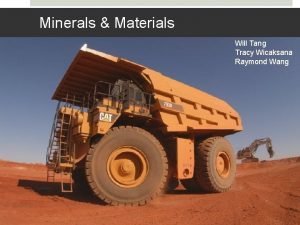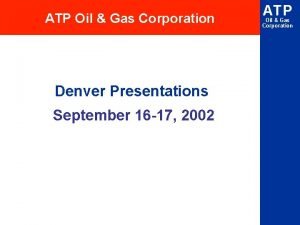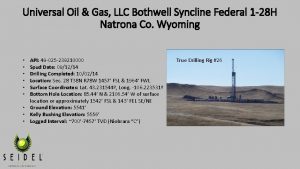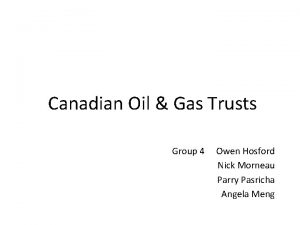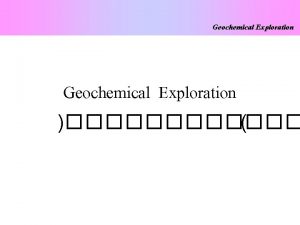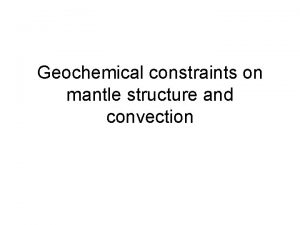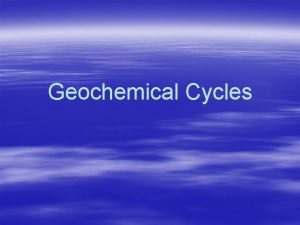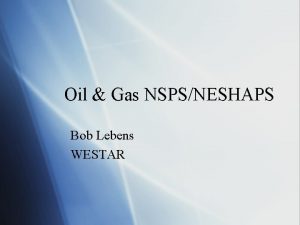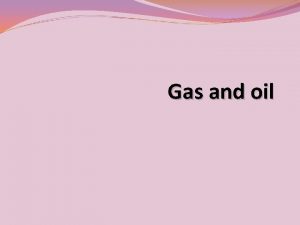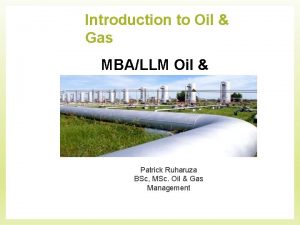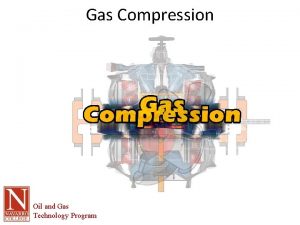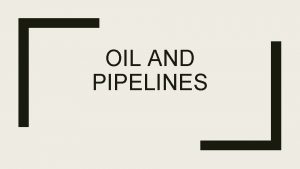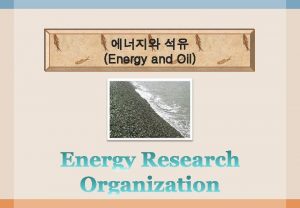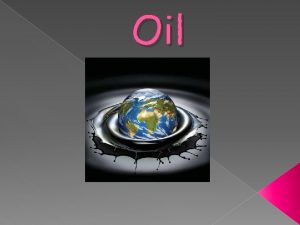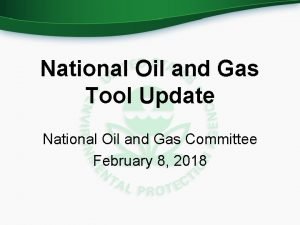YUGRANEFTEGAS Research Center GEOCHEMICAL TECHNOLOGY IN OIL GAS
















































- Slides: 48

YUGRANEFTEGAS Research Center GEOCHEMICAL TECHNOLOGY IN OIL & GAS EXPLORATION Successful exploration of oil and gas for more than 15 years

Yugraneftegas Research Center is a service company offering a wide range of services and solutions in oil and gas industry. The Company has been in the market since 1998. Customers of the Company include the leading enterprises of the Russian Federation – Gazprom, Rosneft, Lukoil and a number of state institutions.

Presentation Outline • What is Geo-chemical prospecting? • How our Geo-chem surveys help in various stages of hydrocarbon Exploration • Sampling methods & Laboratory investigations/analysis • Cluster Analysis & Geochemical Play Model • Integration and Interpretation of studies • Some successful case histories • Our credentials

What is Geochemical prospecting? • Geochemical prospecting is an innovative and cost effective technology which incorporates analyses of adsorbed gases of subsoil rock samples, gas concentration anomalies as well as changes in surface gas compositional effects in hydrocarbon prospective areas. • The manifested anomalies vis-à-vis background effects are mapped to bring out anamalous areas increasing the probability of success in hydrocarbon discovery.

How our Geo Chem studies help in various stages Frontier Basinal areas Exploration stage • Reduce the risk of • To know if the delineated acquaring Seismic data in prospect is adequately non-productive parts charged • To delineate the focus areas • To validate and evaluate for further seismic data concentration clusters acquisition within the exploration area • Through Isotopic analysis , • Optimise seismic data understand Maturity of acquisition basin /block to explore further

How our Geo Chem studies help in various stages Development Stage Play models and refinements • Reservoir limits and extensions • Any by passed oil /gas pockets • Is there any compartmentalisation of Reservoir? • Value addition to reservoir models • Integration with Seismic data • Play concepts in understanding the structural models drawn vis -à-vis Geochemical anomalies observed • Isotopic studies to aid sourcing of hydrocarbons – thus to evaluate hydrocarbon path ways

SAMPLING METHODS AND FIELD SURVEYS

Sampling pattern & Grids ü The field surveys will be undertaken based on geo-morphology, physiography and geological aspects of the study area. ü It is proposed to study the satellite imagery of the study area to facilitate designing of the sample sites and pattern. ü The components of any other available data (wells, Seismic, Geological mapping) would also be integrated to design the pattern of sampling

GEOCHEMICAL SURVEY Sampling Methods Geochemical (atmogeochemical) survey with free pore gas sampling. • active free pore gas sampling on sorbent, • passive pore gas sampling on sorbent. 2. Geochemical survey with gas sampling adsorbed with natural sorbents (rocks, water, snow). Auger drilling to collect samples of surface sediments (soils) or pore gases in summer

Device to Conduct Surveys Using the Technology of Passive Adsorption of Gaseous Soils 1 – tube produced from inert aggregate, 2 – funnel, 3 – filter, 4 – capsules filled with sorbent, 5 – sealing rings, 6, 10 – packer rubbers, 7 – screw with a connection piece, 8 – vacuum pipe, 9 – holder, 11 – blind joint.

COMPARISON OF SAMPLING METHODS FABRIC UNIT AND YUGRANEFTEGAS UNIT AT PASSIVE ADSORPTION Ø Horizontal change of pressure is absent. Ø Horizontal filtration is also inexistent. Ø HD filtration only takes place vertically. Ø The surface of fabric unit is less than 3, 14 whereas Yugraneftegas unit it depends on the diameter of the cone attached. HC flow HC flow d=2 cm d=60 cm s=3, 14 cm 2 s=2826 cm 2

Atmogeochemical survey using active adsorption method with the collection of the samples for sorbent In the process of such surveys, a certain quantity of free pore gas or gas obtained through thermovacuum degassing of the samples of rocks (soils), is pumped through a capsule from a chromatograph thermal desorption unit filled with a of several special sorbents. Throughout this process, hydrocarbon concentration grows up so many times as many times the volume of the gas pumped is more than the volume of the gas sample inserted to the chromatograph when conducting regular tests.

Laboratory research investigations include the following analytical studies: - chromatographic analysis of free gases (С 1 -С 6, Н 2, Не, СО 2, N 2+О 2); - chromatographic analysis of light hydrocarbons (liquid С 7 – С 9, including aromatic); - chromatographic analysis of heavy hydrocarbons (С 10 – С 20); - litho-geochemical study of elements; • isotopic analysis of Random Samples.

Types of gas geochemical surveys conducted by YUGRANEFTEGAS Research Center Geochemical survey with the collection of samples of rocks (soils), snow or water with their further degassing and chromatographic study of the liberated gas content. Atmogeochemical survey with the collection of samples of free pore gas from surface sediments, snow cover or air samples from near-surface layers of the atmosphere. Atmogeochemical survey using active adsorption method with the collection of the same gas samples on sorbent. Atmogeochemical survey using passive adsorption method for hydrocarbon gases coming from the earth interior on sorbent.

Classic Atmogeochemical Survey Pore gas samples obtained by degassing of the samples of soils, drilling liquid, snow or water or directly obtained from the pore space of soils or snow are analyzed using gas chromatographs with flame ionization detectors (FID) Such detectors have the sensitivity of up to 10 -6, i. e. one hydrocarbon molecule per one million of air molecules Saturated and unsaturated hydrocarbons from methane to hexane are determined, in particular in background anomalous fields Heavier hydrocarbons in free gases of pore spaces and near-surface layers of the atmosphere are usually present in the quantities which may not be directly determined using gas chromatography methods

Atmogeochemical survey using active adsorption method with the collection of the samples on sorbent Thus, if the volume of gas inserted to the chromatograph through a loading bin, is 1 ml, when 100 ml of gas are pumped though the capsule with sorbent, the concentration of hydrocarbon will grow 100 fold, and if it is 1, 000 ml – 1, 000 -fold, etc. Such technology may be used first of all to explore oil deposits, as it allows identifying hydrocarbons contained in pore or desorbed gases from С 1 to С 23 and up. The main interest here lies in aromatic and naphthene hydrocarbons, i. e. benzene, toluene, xylene, cyclopentanes and cyclohexanes. Besides, this method allows considerably increasing the sensitivity of geochemical exploration when the deposits lay at the depth of 3 -6 km and more.

Atmogeochemical survey using passive adsorption method with the collection of the samples for sorbent 1. The sensitivity of the method used by YUGRANEFTEGAS Research Center exceeds the sensitivity of foreign counterparts more than 3, 000 -fold. 2. The method used by YUGRANEFTEGAS Research Center is also used to control the sealing of underground gas storage facilities (UGSF). The device used by YUGRANEFTEGAS Research Center consists of a tube produced from inert aggregate (stainless steel, plastic), where two capsules filled with a sorbent are placed parallel to each other, with a seal to avoid the possibility of the gas flow from the earth interior going past the capsules with sorbent. A filter is placed under the capsules with sorbent to absorb water vapor. A sealed funnel is attached to the lower end of the tube to direct the gas flow from the earth interior passing through the surface sealed with such funnel to the tube. The device may be installed at the needed point.

Comparison of Geochemical Survey Methods No 1 2 Sampling Method Sampling Time Geochemical Survey Method Yugraneftegas Research Center Geochemical Survey Methods Soil, Water, Snow, Free Pore Gas and Air Sampling Active Sorption Method Passive Sorption Method Samples: soil, water, snow, gas Free pore gas samples for sorbent Yugraneftegas Research Center modules 17 -20 and more days 10 min 25 min 20 days С 2 – С 20 1*10 -9 С 1 – С 6 1*10 -12 С 2 – С 20 1*10 -12 modules 3 4 Hydrocarbons Identified Sensitivity of Hydrocarbon Identification Method 5 Laboratory Research Methods TD-GC–MS TD, gas chromatography Gas chromatography, GC–MS TD-GC–MS 6 Detection of Background and Anomalous Fields available Integrated Interpretation of Geochemical, Geophysical, Geologic, and Drilling Data available 92 95 98 92 96 95 100 96 none 7 8 Oil-and-Gas-Bearing System Detection Accuracy, % 9 Non-productive Well Forecasting Accuracy 10 Adverse Environmental Impact

YUGRANEFTEGAS Testing Laboratory received technical competency and independence accreditation from the Federal Accreditation Service

Profile of heavy hydrocarbons (C 10 -C 24)in an investigated area

Profile of hydrocarbons and non-hydrocarbons(sm 3/kg) in an investigated area

CASE STUDIES

Fig. Vostochno-Tarkazinskaya block. Geochemical survey of the soils. Propane concentration distribution.

Fig. Vostochno-Tarkazinskaya block. Geochemical survey of the soils. Total butane content distribution.

Fig. Vostochno-Tarkazinskaya block. Geochemical survey of the soils. Total pentane content distribution.

Fig. Vostochno-Tarkazinskaya block. Geochemical survey of the soils. Complex geochemical anomalies.

Fig. Vostochno-Tarkazinskaya block. Layout of averaged contours of hummocky formations located at the foot of step bends, by sediments of the second seismic complex.

Fig. Vostochno-Tarkazinskaya block. Layout of averaged contours of hummocky formations located at the foot of step bends, by sediments of the fourth seismic complex.

Fig. Vostochno-Tarkazinskaya block. Location of well 1 on the seismic line 1088113.

Fig. Vostochno-Tarkazinskaya block. Location of well 5 on the seismic line 108834.

The geological project task was to conduct exploratory geochemical surveys with snow cover (in winter), surface sediments (soils) and surface waters (in summer) to assess the potential of such types of geochemical survey in Nizhnevartovsk district of Khanty-Mansi Autonomous Area.

Stavropolskoye field Comparison of Seismic and Geochemical Data on the Line of Seismic Geological Profile

- seismic profiles - outline of the potential structural and lithological trap in Yu. V bed (under seismic data) - border of С 1 reserves - border of the license block - rupture anomalies, assumed according to seismic data wells: - productive - non-productive - planned Stavropolskoye field (Nizhnevartovsk district) Oil Bearing Capacity Potential according to the Seismic Data Interpretation,

- seismic profiles - outline of the potential structural and lithological trap in Yu. V bed (under seismic data) - border of С 1 reserves - border of the license block rupture anomalies, assumed according to: - seismic data - integrated interpretation of geochemical and geophysical materials - geochemical sampling points - geochemical anomalies - deposit boundaries assumed under the integrated interpretation of geochemical and geophysical materials - the project wells Stavropolskoye field. Predicted Deposit Comparison Map – Seismic and Geochemical Data,

- seismic profiles - outline of the potential structural and lithological trap in Yu. V bed (under seismic data) - border of С 1 reserves - border of the license block rupture anomalies, assumed according to: - seismic data - integrated interpretation of geochemical and geophysical - geochemical materials sampling points - geochemical anomalies Dry Wells - deposit boundaries assumed under the integrated interpretation of geochemical and geophysical -materials drilled wells Stavropolskoye field Comparison Map of Seismic and Geochemical Data with the Further Drilling Outcomes, . Confirmation of geochemical survey forecast

- seismic profiles - outline of the potential structural and lithological trap in Yu. V bed (under seismic data) - border of С 1 reserves - border of the license block rupture anomalies, assumed according to: - seismic data - integrated interpretation of geochemical and geophysical materials - geochemical sampling points - geochemical anomalies - deposit boundaries assumed under the integrated interpretation of geochemical and geophysical materials - boundaries of the traps in Yu. V 1 (1) bed according to seismic data re-interpretation by Tumenneftegeofizika 19/98 -99, 2000 Stavropolskoye field. Comparison Map: Seismic and Geochemical Data (1998), Seismic Data Re-interpretation Results (2000) and Drilling Outcomes. An example of geochemical survey data confirmation by seismic data reinterpretation results wells: -productive -non-productive -planned

-assumed deposit boundaries in deltaic sediments (according to the seismic works interpretation data) - geochemical anomalies -geochemical sampling points -productive (commercial gas flows) -non-productive (water flows) Vizhomlyanskoye gas deposit (Predkarpatsky yield). Comparison of Geochemical Survey Data with Further Drilling Data

Projects Undertaken and Snap shot of Results

Results of geochemical surveys conducted on the territory of the Western regions of Ukraine with the outcomes of further seismic and drilling activities No Structure Name Gas Bearing Potential Assessment under Geochemical Surveys Well Sampling Results positive 1 Mostovskaya positive Non-commercial gas flow, well Mostovskaya-2 positive 2 Yuzho-Grabinskaya positive Commercial gas flow, well Yu. Grabinskaya-1, 2, 3, 4, 5 positive 3 4 Vyzhomlyanskaya positive Commercial gas flow, wells Vyzhomlyanskaya-2, 3, 6, 12, 13 negative, Vyzhomlyanskaya negative (beyond geochemical anomalies) wells Vyzhomlyanskaya-4, 5, 8, 9, 10

No Structure Name Gas Bearing Potential Assessment under Geochemical Surveys Rossovskaya 6 7 (Northern block) Podoletskaya Well Sampling Results negative, negative well Rossovskaya-1 – no flow negative Wels Podolbtsy-1 and (beyond geochemical anomaly) Podolbtsy-2 were drilled beyond the anomaly (in non-optimal conditions under seismic data reinterpretation) positive 8 Podoletskaya (within geochemical anomaly) Not drilled positive 9 Susolivskaya positive 10 Yuzhnorudkovsk aya negative Commercial gas flow, well Novoselki-12 negative, well Yu. Rudkovskaya-1

No Structure Name Gas Bearing Potential Assessment under Geochemical Surveys 11 Yuryevskaya negative 12 Oselevskaya negative 13 Rogoznensky reef negative 14 Knyagininskaya Reservoir Type Seismic Anomaly* (under seismic materials interpretation data) negative 15 Yavorovskaya negative 16 Voshchanetskaya Reservoir Type Seismic Anomaly* (under seismic materials interpretation data) negative (upstructure portion) negative, well Yuryevskaya-1 negative, well Oselya-1 negative, well Bykov-6 negative, well Knyaginichi-1, 2 negative, well Yavorovskaya-1 negative, well Niklovichi-2, 6 Romanovskaya 17 Well Sampling Results negative, negative well Romanovskaya-1

Interval time Complex geochemical anomalies are mainly assigned to the maximum values of seismic waves transit time between B 3 and A reflectors (Jurassic sediments), which is the evidence that oil deposits are associated with fringe zones of rocks-collectors of Jurassic sediments. South Yamal license block. Map to compare complex geochemical anomalies with the map of time intervals between B 3 -A reflectors

Example of assessment of oil-and-gas capacity of a lithological trap and close agreement of geochemical survey data with drilling data Wells: - producing oil - producing water - “dry” - tectonic faults Forecast based on seismic data - Yu 1 -1 bed oil deposit outline - suspected structure-type traps - expected oil-drainage boundary of Yu 1 -1 bed - expected increase in the oil productive area of Yu 1 -1 bed according to seismic data Geochemical data - complex geochemical anomalies

Blocks of the license and place in Western Siberia where our company conducted geochemical researches 1. 2. 3. 4. 5. 6. 7. 8. 9. 10. 11. 12. 13. 14. 15. 16. 17. 18. 19. 20. 21. 22. 23. 24. 25. 26. Mantoysky Yarkhuayakhsky Vostochno-Khokhryakovsky Yuzhno-Ostrovnoy Severo-Kochevsky Tevlino-Russkinsky Severo-Kogalymsky Severo-Pokamasovsky Longyugansky Severo-Vostochno-Khulymsky Yarudeysky Stavropolsky Chatylkinsko-Udmurtsky Kynsko-Chaselsky Lensitsky Vostochno-Perevalny Pangodinskaya area Severo-Nerutinsky Severo-Yubileyny Vostochno-Yubileyny Sredne-Khulymsky Vansko-Namyssky Poluysky Sorumsky Severo-Kazymsky Vostochno-Padinsky

Apart from the territory of the Western Siberia, geochemical surveys were conducted in areas and license blocks of: Komi Republic – three license blocks Bashkortostan Republic – one license block Mari El Republic – one license block Volgograd Region – five license blocks Krasnoyarsk Territory – two license blocks

OUR CREDENTIALS

The Company implements its own solutions and technologies in geology, oil and gas field development. A number of technological solutions developed by the Company are protected by the patents of the Russian Federation.

Thank you
 Primary and secondary geochemical dispersion
Primary and secondary geochemical dispersion Practice geochemical cycles answer key
Practice geochemical cycles answer key Identification test of emulsion
Identification test of emulsion China automotive technology and research center
China automotive technology and research center Types of separators in oil and gas industry
Types of separators in oil and gas industry Catalytic heater oil and gas
Catalytic heater oil and gas Process simulation software in oil and gas market
Process simulation software in oil and gas market Introduction to oil and gas industry ppt
Introduction to oil and gas industry ppt Maximo assignment manager
Maximo assignment manager Maximo for oil and gas
Maximo for oil and gas Madagascar oil and gas
Madagascar oil and gas Oil & gas engineering services
Oil & gas engineering services Deloitte oil and gas
Deloitte oil and gas Oil gas partition coefficient inhaled anesthetics
Oil gas partition coefficient inhaled anesthetics Hitachi vantara oil and gas
Hitachi vantara oil and gas Risk management case study oil and gas industry
Risk management case study oil and gas industry Drops oil and gas
Drops oil and gas Uses of oil and gas
Uses of oil and gas Atb oil and gas
Atb oil and gas Stc devices
Stc devices Abb scada
Abb scada Osu oil and gas accounting conference
Osu oil and gas accounting conference Maximo technician scheduling
Maximo technician scheduling Maximo oil
Maximo oil Energy roles
Energy roles Oil and gas
Oil and gas Oil and gas revenue accounting basics
Oil and gas revenue accounting basics Darren prins
Darren prins Oil and gas company
Oil and gas company Maximo for oil and gas
Maximo for oil and gas Letter of intent due diligence
Letter of intent due diligence Diversifying oil and gas portfolio
Diversifying oil and gas portfolio Full cost method of accounting oil and gas
Full cost method of accounting oil and gas Atp denver
Atp denver Types of separators in oil and gas industry
Types of separators in oil and gas industry Oil and gas supply chain challenges
Oil and gas supply chain challenges Oil gas
Oil gas Universal oil and gas
Universal oil and gas Wvges oil and gas map
Wvges oil and gas map Oil and gas free zone authority recruitment
Oil and gas free zone authority recruitment Full cost accounting oil and gas
Full cost accounting oil and gas Oil sands extraction process diagram
Oil sands extraction process diagram Pseudo reduced specific volume
Pseudo reduced specific volume Imaginary gas
Imaginary gas Gas law
Gas law Ideal gas vs perfect gas
Ideal gas vs perfect gas Conclusion on bhopal gas tragedy
Conclusion on bhopal gas tragedy Gas leaked in bhopal gas tragedy
Gas leaked in bhopal gas tragedy Volume molare
Volume molare
